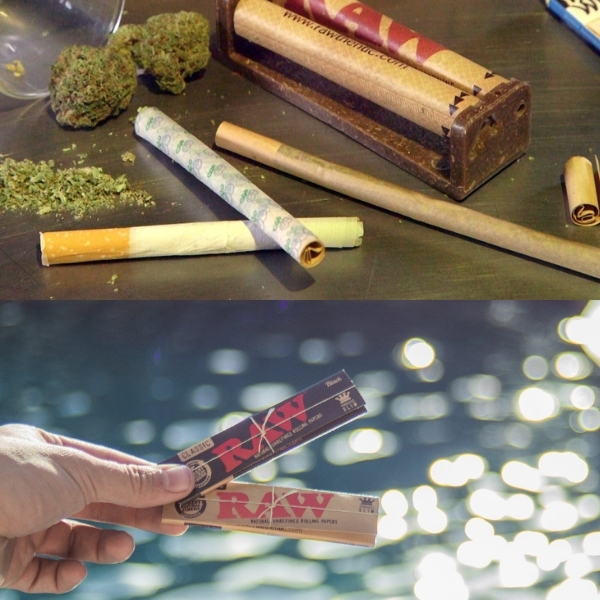How to Roll the Perfect Joint Every Time
Rolling the perfect joint can be a tedious practice in patience, no matter how easy others make it look. However, there are a few simple steps that will get you rolling in no time. Read on to learn some tips and tricks so that you can impress your smoking circle with a perfectly rolled joint.
The first time you go to roll a joint it can be intimidating -- especially if everyone is watching. If you have stumbled through it before, you may have lost a paper or two in failed attempts. Don’t sweat it. It happens to the best of us, and practice will only make you better. And while you could choose to stumble your way through it, you could also choose to read on and get some pro-tips on how to roll the project joint.

1. Prepare for Rolling Area for Success
Your first step might be the most essential for rolling a perfect joint. You should check that you have all the supplies needed to get rolling. These supplies can include a herb grinder, rolling tray, rolling papers, crutches, and a poking tool. Almost anything will work for the poking tool, as long as it is easy to hold, and smaller than the width of an average joint. However, I have found that a standard wooden golf tee does the job perfectly.
2. Grind the Dry Herbs
Next, you will want to use your herb grinder to grind some dry herb to a medium or fine consistency. The finer the ground, the easier it will be to roll a smooth-burning joint. If you have to break dry herb down by hand in a pinch, then be sure to spend extra time breaking it down. Large chunks of dry herb will be difficult to roll and bit of stem can tear through the rolling paper. I prefer to use a metal, four-piece grinder so that the extra kief can settle in the kief catching compartment for later. Once your dry herb is ground to the right consistency, dump it out onto your rolling tray.

3. Pack Herbs onto Joint Papers
This step takes a bit of patience. You will either need to hold the rolling paper in one hand or place it on the rolling tray. Then you will use your free hand to place the ground herb into the crease of the paper. Make sure that the gum line is on the inside of the fold and facing you! My favorite packing position is to hold the end of the paper in my left hand, with my middle finger and thumb supporting the bottom and my index finger in the fold of the paper. Your fingers will almost make a tiny letter “K” in American Sign Language. I then use my right hand to gather the ground herb and place it evenly in the paper, leaving a little bit of space on each end. If you want, you can add a crutch to the end of the paper you’re holding or choose to pack it in at the end.
4. Roll the Joint
This is the tricky part, of course. Sometimes this part just takes a lot of practice. But hopefully, you’ll have some beginner’s luck! Instead of thinking of this step as simply rolling the paper, I find it’s helpful to think of it more as a tuck-and-roll. What I mean by that is, from the packing position detailed above, I place my other hand and fingers in the same position on the other end of the rolling paper. I then tuck the un-gummed side of the rolling paper over the packed dry herb with my thumbs. This can take a bit of finagling, but from there I finish the roll with my thumbs, licking the gum line before it’s all rolled up. A medium amount of pressure should be used so that you both pack down the herb into a roll, but don’t tear the paper. Don’t worry if it looks a bit messy, just make sure it is sealed and in one piece.

5. Perfect the Roll
Now it’s time to perfect your joint. If you laid it on thick on the gum line, be sure to allow the joint a bit of time to dry before messing with it further, otherwise, the paper might tear. Then take your poking tool, or wooden golf tee, and pack down both of the open ends of the joint. Choose which end you want to add the crutch to, if you haven’t already added it. Then twist the other end closed so that no herb falls out while adding the crutch. Roll your crutch paper and place it in the remaining open end of your joint. Then use the golf tee again to poke it down, and if possible, roll the edge of the paper over the top and poke it into the center of the crutch for added stability. Make sure that there are no gaping holes or tears in your joint. If there are, then simply patch them with another paper, or break open your joint and begin again. It’s better to have a joint that smokes smoothly over one that is frustrating to hit.
Hopefully, these steps will lead you down the path of joint rolling glory. But if not, just try again! And again, and again, and again. Or, if all else fails, buy yourself a rolling tool and use that instead! There’s no shame in using a tool, especially if it’s designed specifically for this purpose and works brilliantly.
Related Blog Posts
How to Use a Rolling Tool for Rolling Joints
Blog Categories
- Home
- Industry News
- Vaporizer Reviews
- Dry Herb Vape Tutorials & FAQ
- Wax Pen Vape Tutorials & FAQ
- Oil Vape Pen Tutorials & FAQ
- Vaping Guides & Information
- Dabbing FAQ & Guides
- Smoking Pipe Tutorials
- NY Vape Shop Listicles
- Vape Pen Comparisons
- Vape Shop How To Articles
- Vape Shop Buyers Guide
- Vape Pen Basics
- Herb Grinder Reviews
- Dry Herb Vaporizer Reviews
- Oil Vape Pen Reviews
- Wax Pen Reviews
- Box Mod Vape Reviews